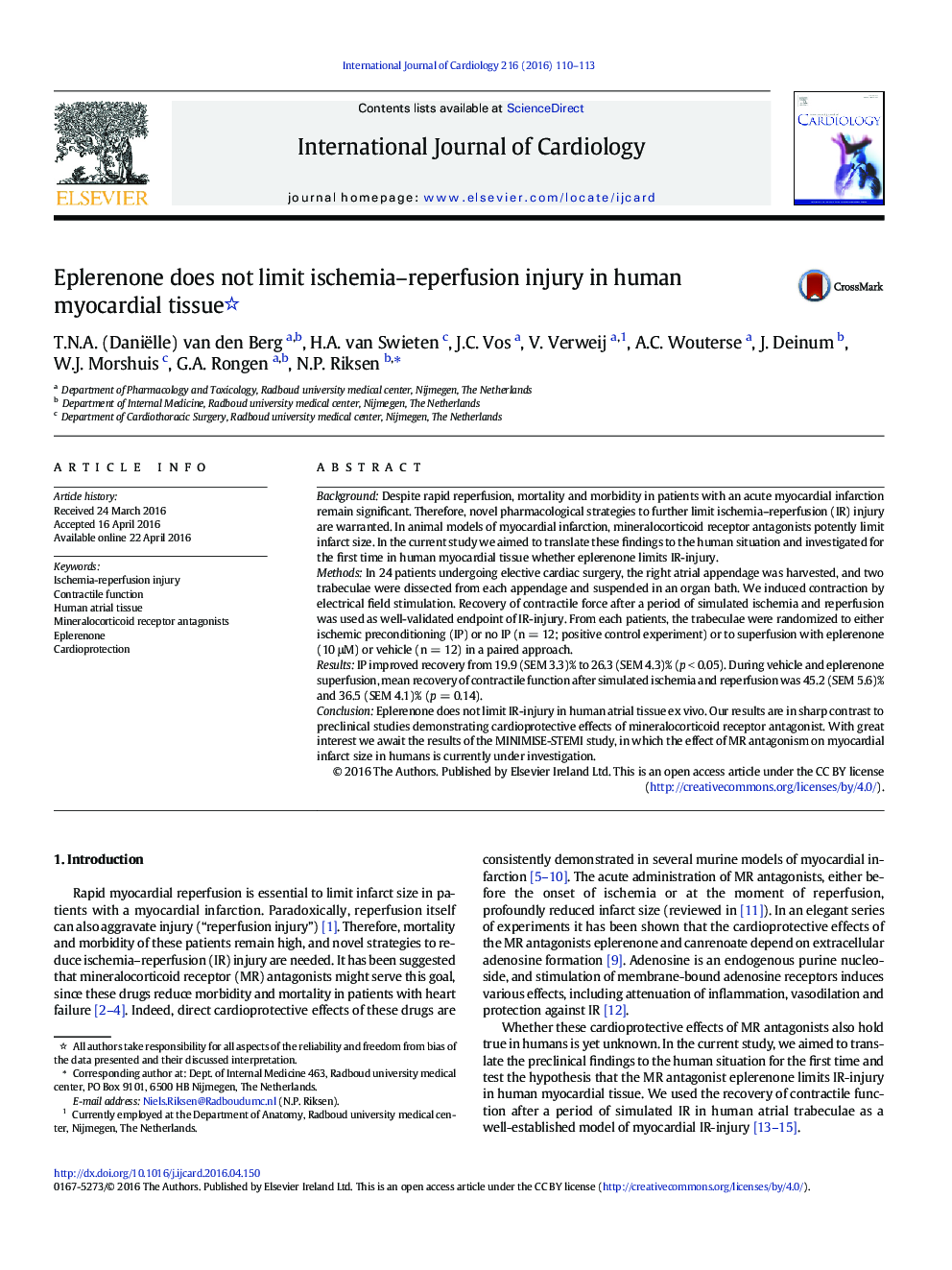| Article ID | Journal | Published Year | Pages | File Type |
|---|---|---|---|---|
| 5963786 | International Journal of Cardiology | 2016 | 4 Pages |
BackgroundDespite rapid reperfusion, mortality and morbidity in patients with an acute myocardial infarction remain significant. Therefore, novel pharmacological strategies to further limit ischemia-reperfusion (IR) injury are warranted. In animal models of myocardial infarction, mineralocorticoid receptor antagonists potently limit infarct size. In the current study we aimed to translate these findings to the human situation and investigated for the first time in human myocardial tissue whether eplerenone limits IR-injury.MethodsIn 24 patients undergoing elective cardiac surgery, the right atrial appendage was harvested, and two trabeculae were dissected from each appendage and suspended in an organ bath. We induced contraction by electrical field stimulation. Recovery of contractile force after a period of simulated ischemia and reperfusion was used as well-validated endpoint of IR-injury. From each patients, the trabeculae were randomized to either ischemic preconditioning (IP) or no IP (n = 12; positive control experiment) or to superfusion with eplerenone (10 μM) or vehicle (n = 12) in a paired approach.ResultsIP improved recovery from 19.9 (SEM 3.3)% to 26.3 (SEM 4.3)% (p < 0.05). During vehicle and eplerenone superfusion, mean recovery of contractile function after simulated ischemia and reperfusion was 45.2 (SEM 5.6)% and 36.5 (SEM 4.1)% (p = 0.14).ConclusionEplerenone does not limit IR-injury in human atrial tissue ex vivo. Our results are in sharp contrast to preclinical studies demonstrating cardioprotective effects of mineralocorticoid receptor antagonist. With great interest we await the results of the MINIMISE-STEMI study, in which the effect of MR antagonism on myocardial infarct size in humans is currently under investigation.
